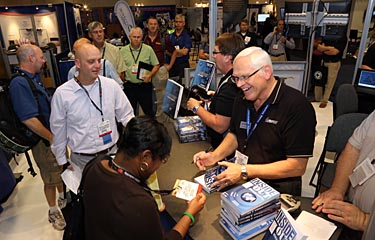This post is from Gary A. Higbee, one of SafeStart’s senior consultants and the co-author of Inside Out. Learn more about Gary’s many accomplishments in the safety industry and find a selection of his many articles at safestart.com/gary.
Earlier this year I visited a new client and I was invited to join their morning management meeting. The meeting was supposed to start with a SafeStart story but the storyteller was talking about something one of the managers had observed on his way to work. It really wasn’t a SafeStart story at all (key elements like the states and errors were missing).
I couldn’t let it go without commenting that while I like the idea of starting the meeting with a story the one that had just been told wasn’t a SafeStart story at all. I then told them my own story to coach them on the proper way to use SafeStart stories to increase awareness at the beginning of the workday.
After the meeting the general manager and I had a coffee together. After we discussed their implementation and logistical issues, he looked me in the eye, leaned close to me and asked, “How can I most effectively support the implementation and sustainability of SafeStart?”
He had been through the leadership training, attended the steering committee’s first meeting, completed the first five units of core training and he still felt uncomfortable. He pressed me for examples he could use as a checklist.
He was asking the question because he wanted to be able to lead, mentor and influence his organization, and not just tell them to do SafeStart. He also saw the obvious link between SafeStart and improved quality as well as organizational performance. He knew he had to understand and “really get SafeStart,” as he said.
So we sat down, rolled up our sleeves and went to work. He took note as I went over what management support actually looks like. Here is a brief practical list of what we came up with. While this list is specific to SafeStart, the principles are the same for almost any major new safety initiative:
- Know the initiative like the back of your hand. For SafeStart, this means having a thorough understanding of the four states, four errors and the four critical error reduction techniques. You need to show employees that you take SafeStart seriously enough to know the basics well and incorporate the terms into your vocabulary.
- Come up with a number of personal stories that demonstrate you know what SafeStart is all about. The stories have to meet all four of the components of a good SafeStart story. Your stories will also show that the safety initiative is universal, as it applies to everyone regardless of job title.
- Have at least one example of analyzing a close call (one of SafeStart’s techniques to prevent a more serious mishap) to show that it’s possible to improve personal safety performance—and that you’re dedicated to doing so yourself.
- Be able to explain the value of watching others to raise safety awareness and to adjust behavior to avoid making an error.
- Start working on a safety habit and be able to discuss how the habit development is going. Be prepared to discuss challenges you’ve experienced as well as successes.
- Support the continuance of training. When it comes to SafeStart, this includes Extended Application Units and Rate Your State.
- Understand that leaders can cause people to compromise safety (specifically, by being in one of the states that lead to injury-causing errors) without intending to. Saying something like “We have to get this shipment out by four” might cause people to rush or make a poor decision, both of which elevate the risk of injury.
- Never use SafeStart or any other progressive safety training as a disciplinary tool!
This isn’t a comprehensive list, but it’s a great start to leading your company to safety success. And while I’ve obviously focused on SafeStart, in my experience all the items on the list work for nearly any new safety implementation.
If this list seems overwhelming then pick one or two items and work on them. Once you’ve mastered them then you can move on to others. If you want to gain a better understanding of some of the concepts I’ve outlined here, check out one of our free on-demand webinars.

